
Noticing an author’s purpose helps us 1) determine what’s important in a source, 2) begin to think critically about the information in a source, and 3) remember what we read. What follows are a few recommendations for teaching “author’s purpose.”
Integrate WHY into your discussions of author’s purpose
The WHY of noticing an author’s purpose can be eye-opening for students. Make this clear. I highly recommend posting these reasons and then adding additional reasons along the way.
Using P.R.I.D.E. helps readers identify author’s purpose more precisely
I’m not a big fan of teaching the mnemonic PIE – persuade, inform, entertain. I think those “purposes” are too broad and a lot of the “purpose” depends on the reader (i.e., I love nonfiction and I’m entertained and informed by almost all of what I choose to read). An alternative is PRIDE – persuade, recount, instruct, describe, explain.
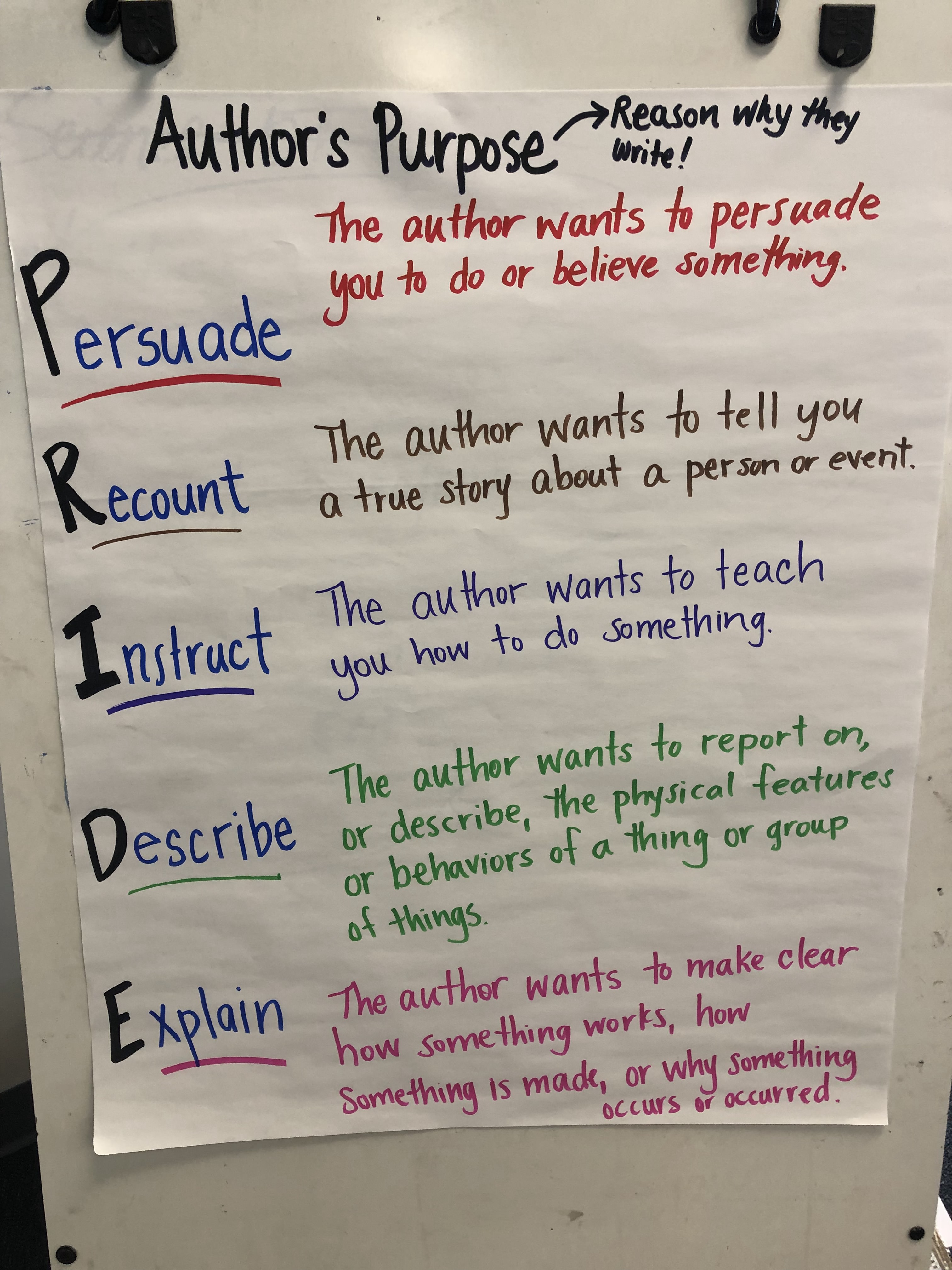
Noticing purpose helps you determine what’s important
When we notice what seems to be an author’s purpose, we can use that purpose as a lens for making sense of the source. For example, if I notice that an author seems to want to persuade me to believe something, I’m going to look for reasons the author gives and I’m going to analyze the logic of those reasons. Or if I notice an author seems to want to explain something to me or help me understand how something works, I’m going to look for steps, procedures, language that moves me through a process.
Noticing multiple purposes reveals how an author develops an idea
Students need to be open to the idea that an author may have more than one purpose in writing or creating a source. An author may want to persuade you that the Holocaust was an awful event while also telling the story of members of a resistance movement. An author may want to persuade you that the Titanic sinking was avoidable while also explaining how that happened. An author may need to explain how something works while also instructing you on how to fix that something when it is broken. Being aware that authors may have more than one purpose can help students notice shifts in content, remember the content, and think critically about how the author develops ideas.
Artifacts from Phase 2 lesson
The three-phase series of lessons includes the following:
- Phase 1 Meet the Source – Students read the text as a whole and discuss.
- Phase 2 Meet the Strategies – With teacher support, students engage in close reading of the text (or part of the text) with a clear purpose (e.g., What is the author’s purpose? Why do you think so? How does thinking about the author’s purpose help you think about what’s important?)
- Phase 3 Meet the Response – Students use the notes they take during a phase 2 lesson to write a response.
Below are notes and artifacts from Phase 2 of a series of lessons I taught with a small group of intermediate grade students.
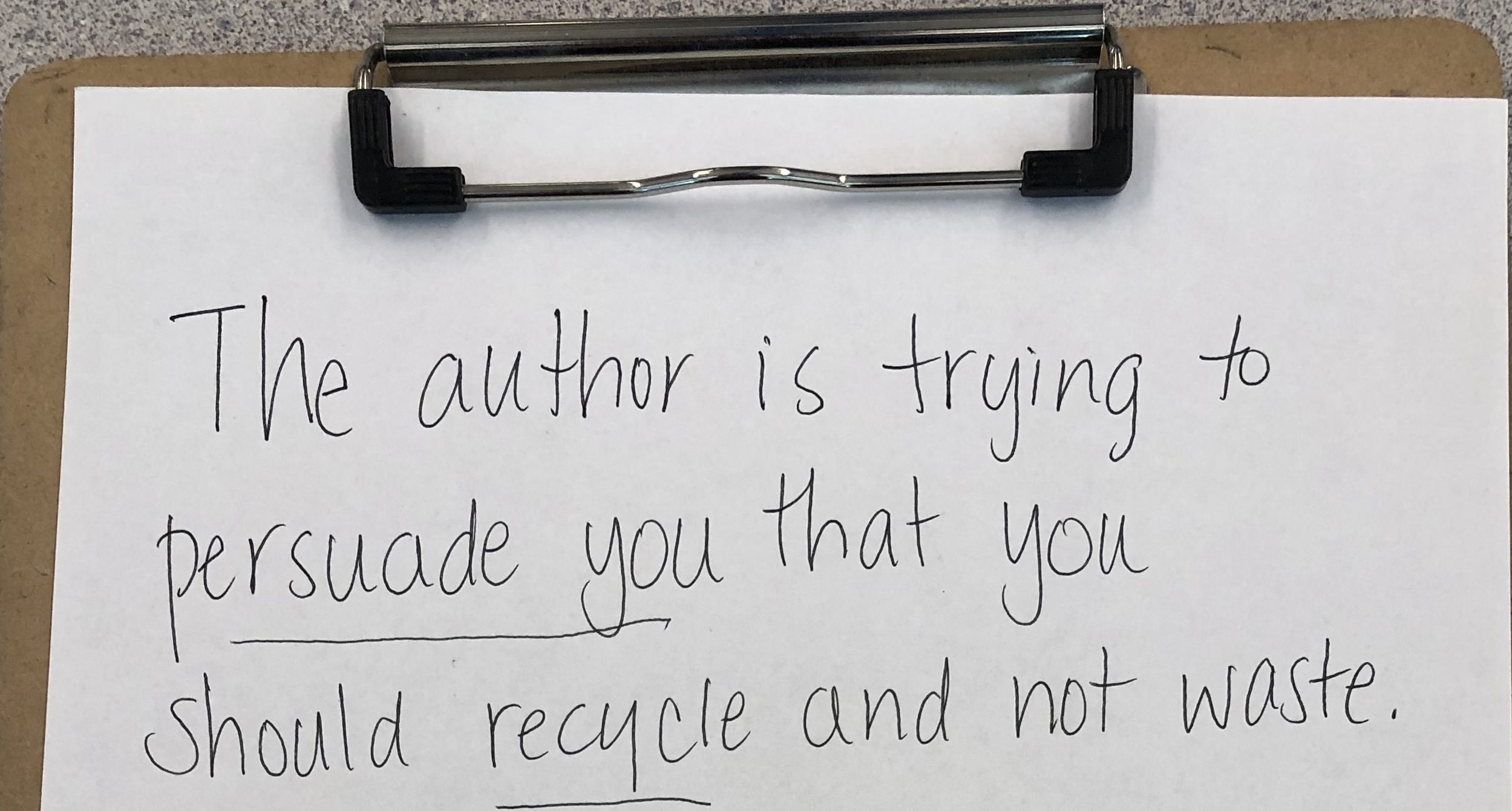
Note: The students quickly identified the author’s purpose as to persuade. We engaged in shared writing of this statement about author’s purpose.
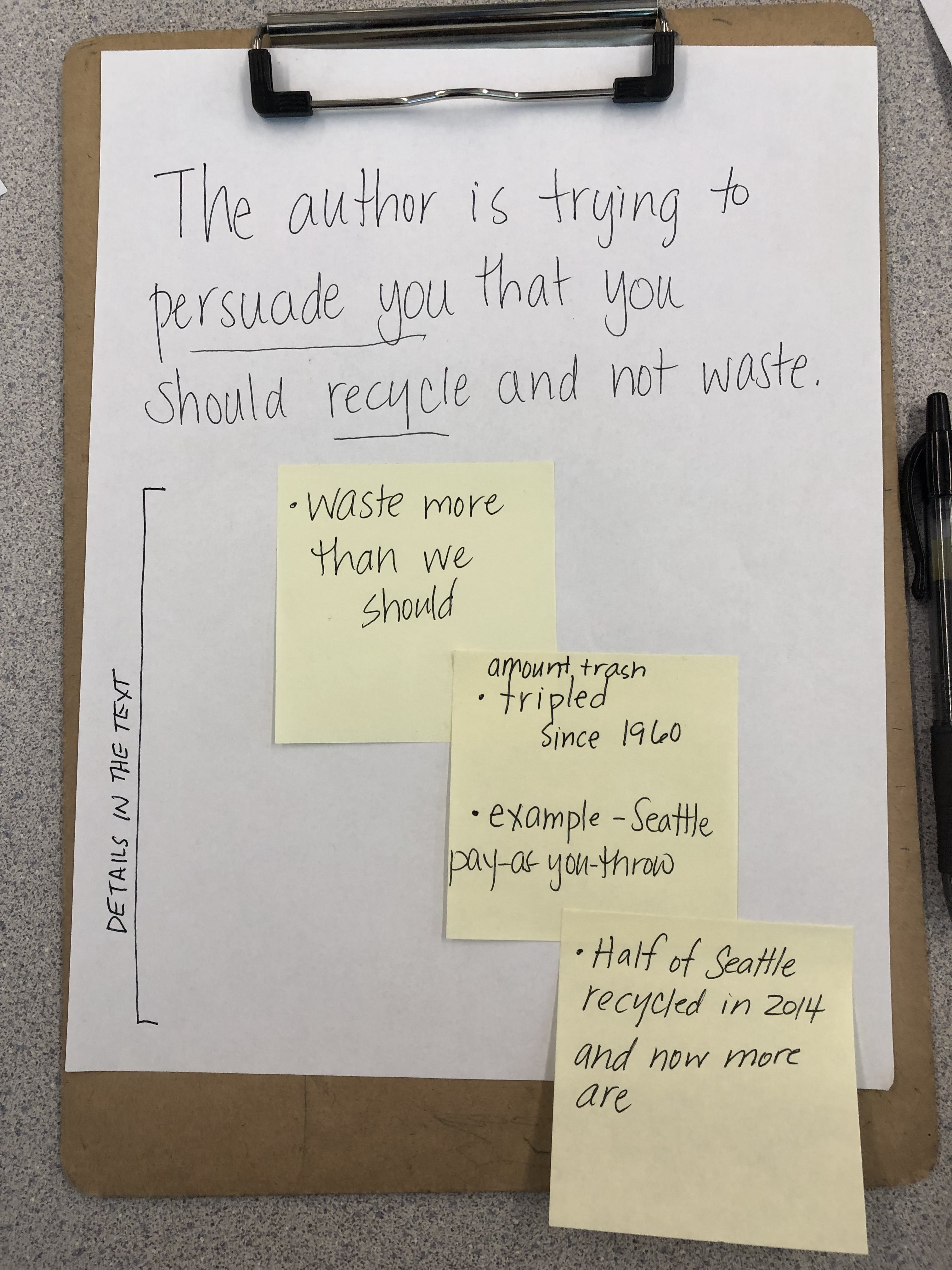
Note: I thought aloud and took notes about a detail that I thought revealed the author’s purpose. Then together we added additional details. This included rereading & asking “What am I learning?” and “What does that make me think the author’s purpose is? Why?” to make sense of the text. Our notes are just enough words to trigger memory of what we learned or thought about. These notes were used to help students write a response during the Phase 3 Meet the Response part of the lesson.
Noticing purpose leads to identifying “text structure”
An author’s purpose(s) drives how they structure a text. For example if an author wants to instruct a reader in how to make a birdhouse, they may use a sequence text structure, listing the steps in numerical order. If an author wants to persuade you that girls around the world should have access to schools, they might use a problem-solution text structure or a cause-effect text structure. Studying author’s purpose should lead students into thinking about the source’s structure as well–they are inextricably linked. I use a building analogy to explain the relationship between purpose-structure to students.
Noticing author’s purpose makes it easier to compare sources
If you have a copy of my new book Nurturing Informed Thinking: Reading, Talking and Writing Across Content-Area Sources, check out Chapter 3, Lesson 8, p. 66!
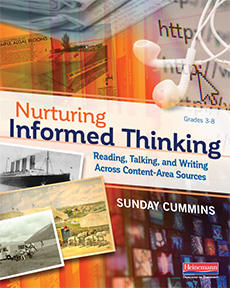
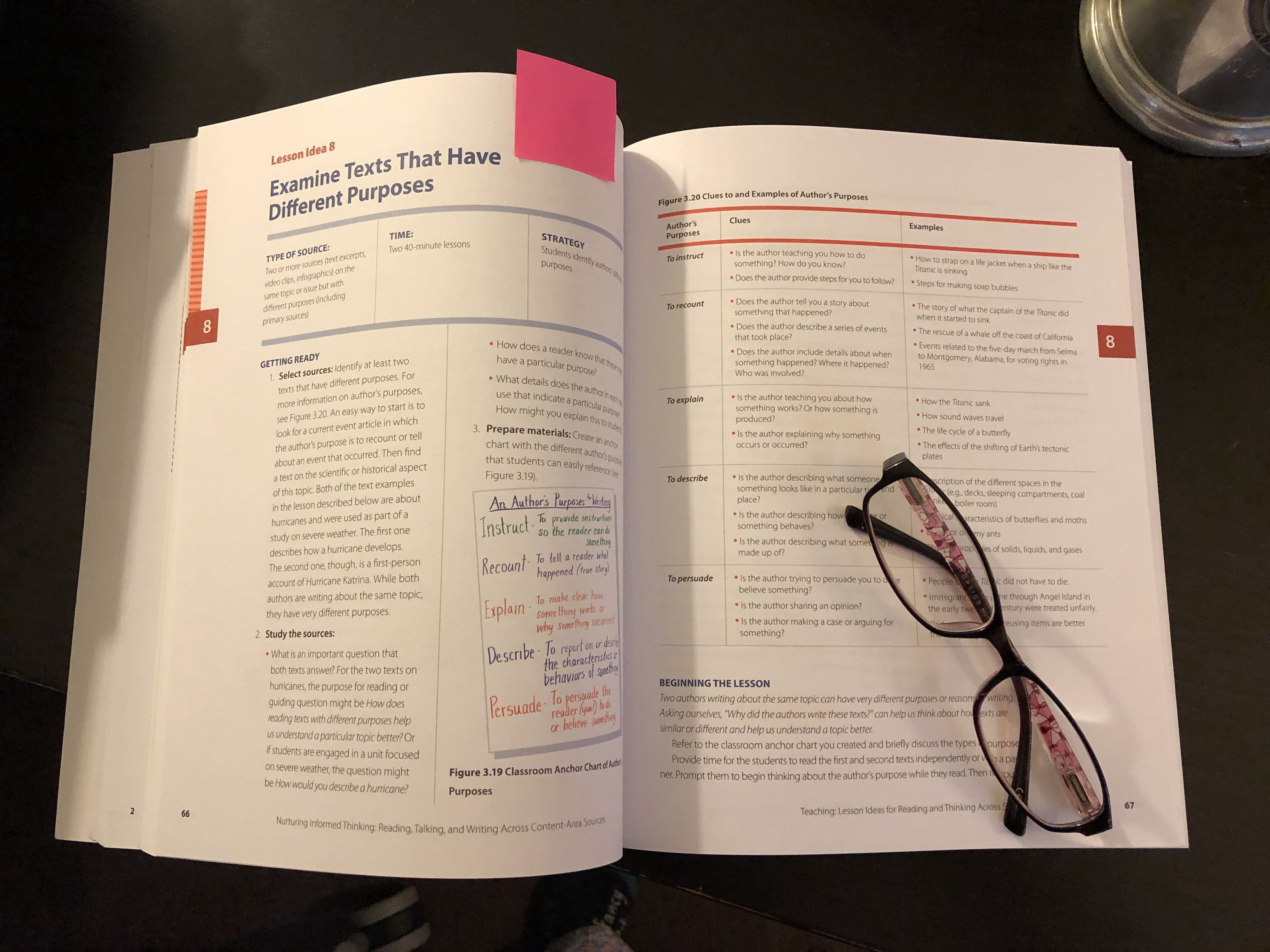
Hope this helps.
Sunday
A version of this was originally posted December 2018
